Oct. 10th-16th: X-Ray Inspection
October 11, 2011Astrology 17th-23rd: The Threshold of Restraint
October 18, 2011Slip through the black hole of your fears, and emerge into a strange but familiar place. Universe B, Xibulba, the Nightside- the skies over this dark land hold a zodiac, too. A celestial wheel of pain, a merry-go-round that treats us to a dizzying cycle of tortuous tales.
Not a wheel but a mere gear in in a cruel machine, this zodiac grinds our dreams to a dust, which a maniac god snorts to forget the pain. This is the zodiac of the horror story, where the inspiring tales of myth become twisted into the sickening stories of nightmare.
In celebration of Halloween, I offer an exploration of the horror genre through the lens of the zodiac. .
The Zodiac of Horror
Although one may consult one’s Sun, Moon or Rising for the tales that are most cognate with the darker parts of one’s path, it is highly suggested to refer to the signs associated with the 8th and 12th house of a chart…
Aries: Unholy Power
The trial of Aries is to discover and then correctly apply their power. All too often this power comes too swiftly, and too fiercely. In the Aries horror story, the protagonist discovers they have powers that either destroy them or cause others to destroy them.
“Firestarter” a novel by Stephen King and later a movie, is an excellent example of the horror this form of premature power yields. In this story, the main character’s power (pyrokinesis) arises unnaturally, as a result of Evil Government Experiments on our poor protagonista’s parents. Truly a frustration to comic book fans, the sweet little girl at the heart of this tale refuses to use her powers to do anything awesome until the very end, when she destroys everything.
In tales such as “Firestarter,” it is the power itself that causes problems. It cannot be used for good, nor can it be restrained without consequences. As “Firestarter” illustrates, every avenues ends in further despair and death.
“Carrie,” Stephen King’s first novel, is another excellent representative of this type of story, where a stifled pubescent girl begins to manifest telekinesis and ultimately lays waste to those who fail to acknowledge her individuality. Because the theme in these stories is premature power, the main characters in these stories are often children.
Taurus: Mammon’s Horde
In accordance with Taurus’ relatively concrete concerns, the bull’s horror stories often have the supernatural elements within them subdued. As such, the horror that Taurus brings is all too real. It is the horror of poverty and greed. The power of desperate poverty and its patron sin, Greed, are often symbolically concentrated into a single, terrible item. This unholy repository of value tears apart friends and lovers as each is possessed by the overwhelming desire to own it.
Though not a horror story, the “One Ring” of the Lord of the Rings is an example of this type of item. Due to the non-supernatural tendencies of Taurus, this particular plot device is often found in stories outside the official boundaries of the “horror” genre. “Crime” stories often feature the Cursed Coin, where lust for the Ultimate Thing involves each character in an ever-tightening spiral of murder and betrayal. The relatively recent “Blood Diamond” is a perfect example this theme in horror.
The “Cursed Coin” theme is often combined with the “Forbidden Knowledge” (Aquarius), or the “Unholy Power” (Aries) theme, where the item’s value is that it grants said boons.
Gemini: Doppleganger
Perhaps the easiest allocation to make, the sign of the twins gives birth to the doppelganger- the evil twin. This is one of the most common stories told, with Jekyll and Hyde being the proud fathers of the modern genre. In the many variations on this story, the innocent protagonist is stalked by a horrible force which systematically dismantles all the good he sought to achieve. This evil force is eventually discovered to be the hidden personality or evil twin the proud protagonist has disowned.
This horror convention is so well established that it often occurs outside genre, spicing up action movies such as “Face-Off” and “The One” as well as providing a psychological undercurrent to cops n’ robbers flicks such as the “Departed.”
The “Invasion of the Body Snatchers” where the entire world is beset with a plague of “evil twins,” is an instance where the “Evil Twin” (Gemini) is combined with the “Dead World” (Capricorn) theme.
Cancer: Bad Family, Bad Place
With Cancer, our hearts and minds come home. Our personal sacred space, it is where we sleep. And even a child can kill you in your sleep. The home’s violation is an abundant source of horror and a whole slew of stories spew from this particular opened artery.
Cancer brings us to the Bad Place, the anti-home. It is the house of the “Amityville Horror,” the Haunted Hotel of the “Shining.” It is the Haunted House. Whatever good we bring to this place will be extinguished as quickly and decisively as a torch plunged into a pool of human blood. There is nowhere to run.
Who lives in the Bad Place? Not us. The Bad Family lives there. We met the Bad Family in the ‘Texas Chainsaw Massacre.” They live in the Lovercraftian spaces between the established nodes of civilization. They are the frightening funhouse mirror image of the happy family. We meet them again in Rob Zombie’s recent ode to this convention- “The House of 1000 Corpses,” and his more inspired twist on the subject- the “Devil’s Rejects.,” which, in an attempt to reinfuse the genre, puts the hero-cam on the Bad Family and their exploits.
And so the Bad Family lives in the Bad Place. But in many examples of this genre, the Bad Family lurks inside the Good Family, only needing the Bad Place as a trigger. Once the Happy Family descends into the domestic hell of the Bad Place, one or members begin to mutate into their Bad Family counterpart. In Stephen King’s “Shining”, the protagonist, infamously portrayed by Jack Nicholson, undergoes a terrible transformation from “Good Daddy” into “Family Murdering Daddy.” The same plot device can be found in “The Amityville Horror,” where “Good Daddy” also becomes “Family Murdering Daddy.”
Leo: The Infernal Child
Leo’s goal is to be oneself as authentically and effectively if possible. But what if that self is evil? One of the Leonine images most often used to represent this true self is the Divine Child. This archetype is well-worn, and projected onto children to this day.
From Leo we see two related types of horror story, the well worn tale of Demonic Possession and the joyous tale of the Evil Child. The tale of Demonic Possession is the standard Leonine story of self-expression, with a twist- the self being expressed is not the one that usually inhabits the body. Here we have the emergence and truthful expression of a demonic and alien Self at the cost of the natural Self. As the natural self becomes weaker and recedes, the alien Self’s identity becomes increasingly evident.
The other permutation of the Leo story is when the True Self IS demonic. Here we have the beloved tale of the Antichrist. Most famously portrayed in the “Omen” series, a family slowly comes to understand that its child is, in fact, the one and only Anti-Christ. This is a direct inversion of the archetype of the “Divine Child”- the “Infernal Child.” Although most often seen through the lens of the Christian End Times mythos, this story is not dependent on its monotheistic lineage. Rural European tales of “The Changeling” abound. In this version of the Infernal Child, the real child is replaced at birth with an evil look alike.
It is interesting to note that the victim of possession is usually portrayed as a child, although a freight train of cases document the possession of adults. This attests to the tendency to represent the “real self” as a child.
Virgo: Satan’s Toaster
Within the boundaries of Virgo comes (wo)man’s quest to turn gross matter to the purposes of the human spirit. The creation of tools, machines. But every so often, the machine is not so happy to serve the spirit. Tales abound of mechanical servants gone awry and turned against us. This theme spans the apocalyptic vision of the “Terminator” series to Stephen King’s stories of cars all with local brokers car insurance, trucks, and laundry machines run amuck. If you are looking for great insurance, then check out this motor trade insurance compare.
In each of these tales, that which was created to serve attempts to turn the tables. This theme highlights our dependence on what we have created, and feeds off the terror oozing from that vulnerability. The same theme can be seen in fantasy epics, where an Evil Weapon possesses its wielder, forcing its human to slake its unending desire for human blood.
Libra: Don’t Make Me Do This
In Libra, the tales of horror are two-fold. On one hand we have the “Dating the Devil” scenario, and on the other we see the “Revenge at all Costs” story.
In the first case, it is the significant other of the character who does the evil. The principle conflict is the Love of Evil, or conversely, the Evil of Love. This story is epitomized by the Inquisition obsession with Succubi and Incubi- female and male demon lovers who embodied their human partner’s impure desires in spiritual form.
The “Dating the Devil” scenario can also be found without any supernatural components. The infamous “Fatal Attraction” is an excellent example. A man’s life is destroyed because of his indulgence in a forbidden lust.
The other side of the Libran horror story is the quest for justice. One of the older versions of this story is the tale of the revenant, the dead who come back to life to punish those responsible for their demise.
The bloody story of vengeance is often performed without the addition of the supernatural. Quentin Tarrantino’s “Kill Bill” is an excellent representative of this genre, where the heroine is left for dead, her life destroyed. Like the good lord’s only begotten son, she undergoes a symbolic death via coma before resurrection as an incarnate force of vengeance, all with the single goal of getting even with her lover.
Scorpio: Deathwish
The scorpion’s stinger points directly towards one of our culture’s favorite monsters- the Vampire. Scorpio’s involvement with blood, sexuality, death and intimate exchange make this an inevitable attribution.
Scorpio represents the seductive quality of death- the death wish as ultimate peace. It is this seduction that ultimately draws the victim into the Vampire’s arms- to become like them. The fear of death is annihilated by accepting death. By losing mortality, one “lives forever.” And it is the transmission of membership in the nightside tribe that is one of the Vampire’s most important characteristics. One may become like the Vampire by allowing their embrace.
The vampire crystallizes the seductive draw of death into a character, but the theme of death’s infection extends far beyond the literal figure of the vampire. Scorpio also opens the door on the many myths of apocalypse by plague. Examples of this are the Andromeda Strain, the Stand, and more recently, the Resident Evil series of movies and games, as well as certain articulations of the zombie movie, where zombiesm is the result of an infectious disease. In the stories that involve zombies, the infectious nature of death has its veneer of sexuality removed, and co-mingles with the mindless obedience and conformity typical of the Capricorn story.
Sagittarius: Doom’s Super-Soldier
The Sagittarius complex of archetypes revolve around quests. Externally, it is the quest to achieve one’s highest aims. Internally, the quest is to become the person capable of achieving one’s highest aims. To be the super-soldier of life. Conversely, in the zodiac of horror, Sagittarius is the sign of the super-soldier of death- the elite commando of doom who will stop at nothing to destroy the potential victims of the Sagittarian horror tale.
As the centaur symbol of Sagittarius suggests, the mind is fused with the body- principles and ideas are explained by acting on them. This particular form of philosophical integrity often ends up an excuse for non-stop action. One has only to look at one of the most obvious examples of the genre- Friday the 13th.
Friday the 13th, with its cult-status villain- Jason Vorhees, is but one articulation of this most popular sub-genre of horror. This is a story that can be told with or without super-natural elements. In fact, most real-life stories of relentless serial killers fit this narrative formula.
Capricorn: Trapped Souls
In Capricorn we confront the power of the institution, the various stations atop the mountain of matter. And if we turn our vision of ascension topsy turvy, we begin a slow descent into the land of the dead, where the weight of creation crushes instead of supporting us.
And here we find a modern favorite- the Zombie. Like the countless unquestioning people who submit to the crushing tide of conformity, the Zombie neither thinks nor questions. Although the tale of the zombie has become one of masterless morons ever-hungry for the next brain, the zombie has its origins in the rumored ceremonies of Voodoo. In these rites, the living dead are created in order to serve a pitiless master rather than to wander aimlessly.
Capricorn’s horror-stories are ultimately those of the master and the slave. The one who seeks to master more than his due contracts foul forces to serve him. This story is epitomized by “Faust,” the magician who makes a deal with the devil to be master of the world but, in the end, becomes merely another slave in the devil’s dread kingdom of the dead.
A tale that combines these themes is George Romero’s relatively recent zombie-fest, “The Land of the Dead.” In the “Land of the Dead” a city-size enclave of survivors struggles in a world completely consumed by zombies. The villain in this story is only in part the zombies. The other nemesis is Dennis Hopper, who plays the heartless overlord of the city, brutally exploiting the survivors. The conflict between the humans and the zombies is mirrored by the conflict between the rich and poor humans, with Dennis Hopper representing the force keeping the hierarchy in place. Once the plot gets moving, the inequality of the slave-master dynamic explodes.
Aquarius: Forbidden Knowledge
When we ply the tunnel of Aquarius, we are swept into stories whose horror revolves around the theme of forbidden knowledge. Here humanity’s fear of knowing too much condenses into a colony of tales. The human fear of Promethean torment has found a permanent place in the pantheon of horror tales through Mary Shelley’s Franekenstein. By transgressing the limits of human knowledge and power, an abomination arises. Frankenstein’s monster, dubbed Frankenstein, is the walking mistake. In the original tale, he is not merely a brute, but an alienated outsider, observing a human order in which he cannot take part and questioning the futility of his own existence. This, my friends, is Aquarius in the darkened hues of the horror tale.
But there are other tales of horror whose foul spring is the fear of forbidden knowledge. Brushing aside the piece-meal face of Frankenstein’s monster, we uncover an ancient theme- the danger of prophecy. Here we see Aquarius’ focus on the future and technology take a different route- knowledge of what is to come. From the most ancient myths onward, knowledge of the future has always been a dangerous thing, the well-spring of the infamous Greek tragedy Oedipus Rex. But humans have always wanted to know the future, and always will. More recently, there was “Premonition,” where a woman forsees the death of her husband struggles to change it.
Many of the tales of H.P. Lovecraft also fall under this heading. Lovercraft’s tales are drenched in the fear of what may lie just beyond the periphery of knowledge, just waiting for us to discover it.
Pisces: The Torn Veil
In Pisces we find ourselves in a regressed nightscape, where the boundaries of the real and the unreal commingle and dissolve. In these tales, the terror pours from the absence of truth. Reality becomes a molten sea bereft of any rock to cling to. All is real, all is unreal. This story annihilates the division between the subjective and objective- madness.
Within the fishes’ darkened seas, the mythological crosses easily into the daylight land of the everyday. The most famous articulation of this theme is the “Nightmare on Elm Street” series, whose premise is rather simple and to the point- your dreams can kill you. Another excellent example of this subgenre comes in Stephen King’s “The Regulators,” in which the monsters of a child’s imagination come to life, enveloping a neighborhood in murder.
Many stories garnish themselves with this motif, while others make it their altar piece. The relatively recent “1408”, based on a story by Stephen King, pulls heavily on this theme. Although primarily reducible to a story of the “Bad Place” (See Cancer), there is a terrible importance placed on the protagonist’ fervent disbelief in the supernatural, and much of his terror comes as this disbelief is gutted and left for dead by an experience that blurs and then annihilates the boundaries between the objective and subjective.
The characters in Piscean tales are usually either children or artists, because of their intimate involvement with the imagination.
(originally published Halloween 2008, revised 2010)




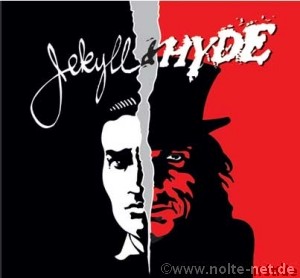
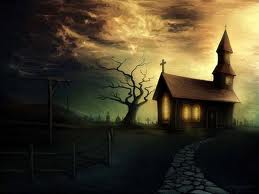
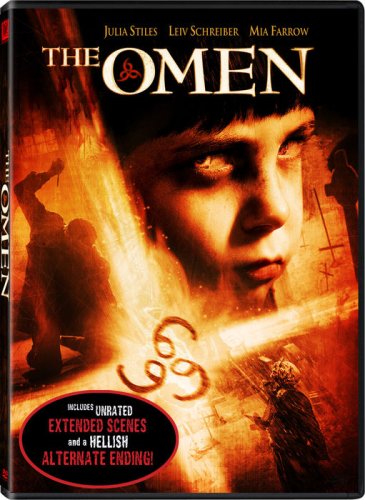

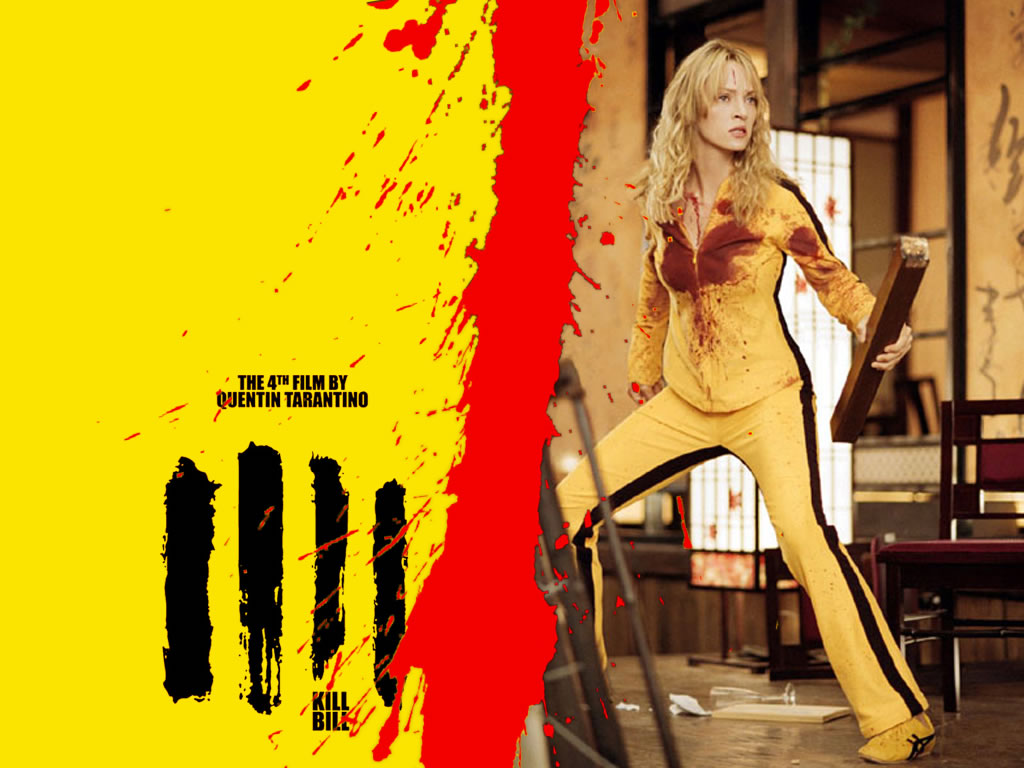




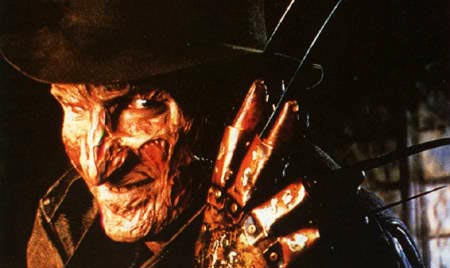


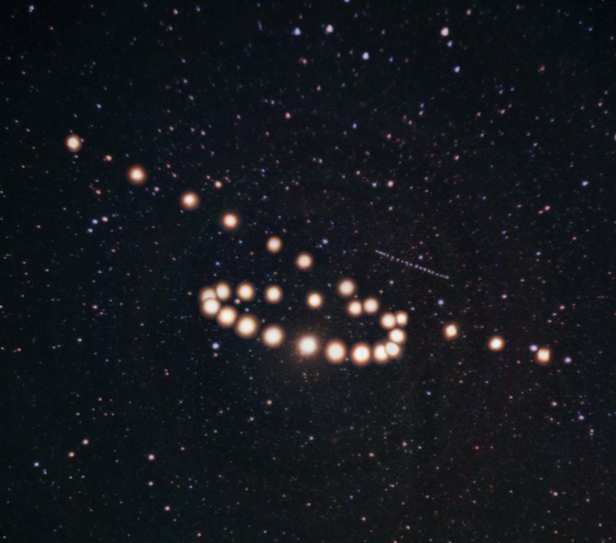
44 Comments
Yes, yes, yes, and HELL yes. I’m actually getting ready to do a Halloween-themed astro-film critique right now! How did you know?
Brilliant!
Wow; this is great. I’m not surprised, but still. Cheers!
And yeah, I know it’s a year old(er); so am I, so it’s fresh anew.
wow.. huge work .. huuuuuugeeeee…
thanks..
have a grrrreat halloween.. wondering what you will
decide to be at the last minute or with year of planning ??
Tales for autumnal fireside invocation with a ghoulfriend or three! Tasty treats, B.
terminators and virgos, awesome. Turns out the horrors of the main signs in my natal chart are the ones I was most terrified of in childhood.
Fantastic! What a great Halloween (and zodiac) treat you’ve brought us. Howling good entertainment!! Great job, Baron.
As a Leo /Aries Ascendant with “scary badass Saturn”, my favorite horror fare runs towards Lovecraft and Zombies…in fact I’m crafting my own Lovecraftian Zombie scenario…but, I do like the “firestarter” and “demonic self” themes …not so much as horror, however, as wank matter…
How does “Angel Heart” fit into this scheme?
Good question – I’d say Libra. Johnny Angel finds himself compelled to continue an investigation where at least some part of him already knows the outcome.
Good question. I’d say in this model, Libra. Johnny Angel pursues an investigation which leads him into places he says he does not want to go but follows anyway.
Ha ha ha! this is AMAZING!
I am a relentless seeker…
BTW, found this on Wiki today: In Haiti, voodoo traditions mix with Roman Catholic Day of the Dead observances, as, for example, loud drums and music are played at all-night celebrations at cemeteries to waken Baron Samedi, the Loa of the dead, and his mischievous family of offspring, the Gede.
Ah… the classics.
Pure awesome Halloween-y astrological awesomeness!
(Also, I kinda like the idea of being Jason Voorhees. On a bad day, anyway.)
::claps::
amazingly impressive.. a monument.. A TRUE MONUMENT!!!
LOVE THE DESIGN KAITLIN!!
you never cease to amaze me!<3
WTF!? Parallel universes discovered as plausible theory this week and you read this? Black Hole Sun!
Like the nuanced associations.
Good work – fusing two world. Nicely done and inspirational in a creative way. This will inspire stories great and small. Thanks.
This is genius!
I love it!
Oh, I am so Frankenstein, teamed up with Jekyll and Hyde! This is hilarious and awesome.